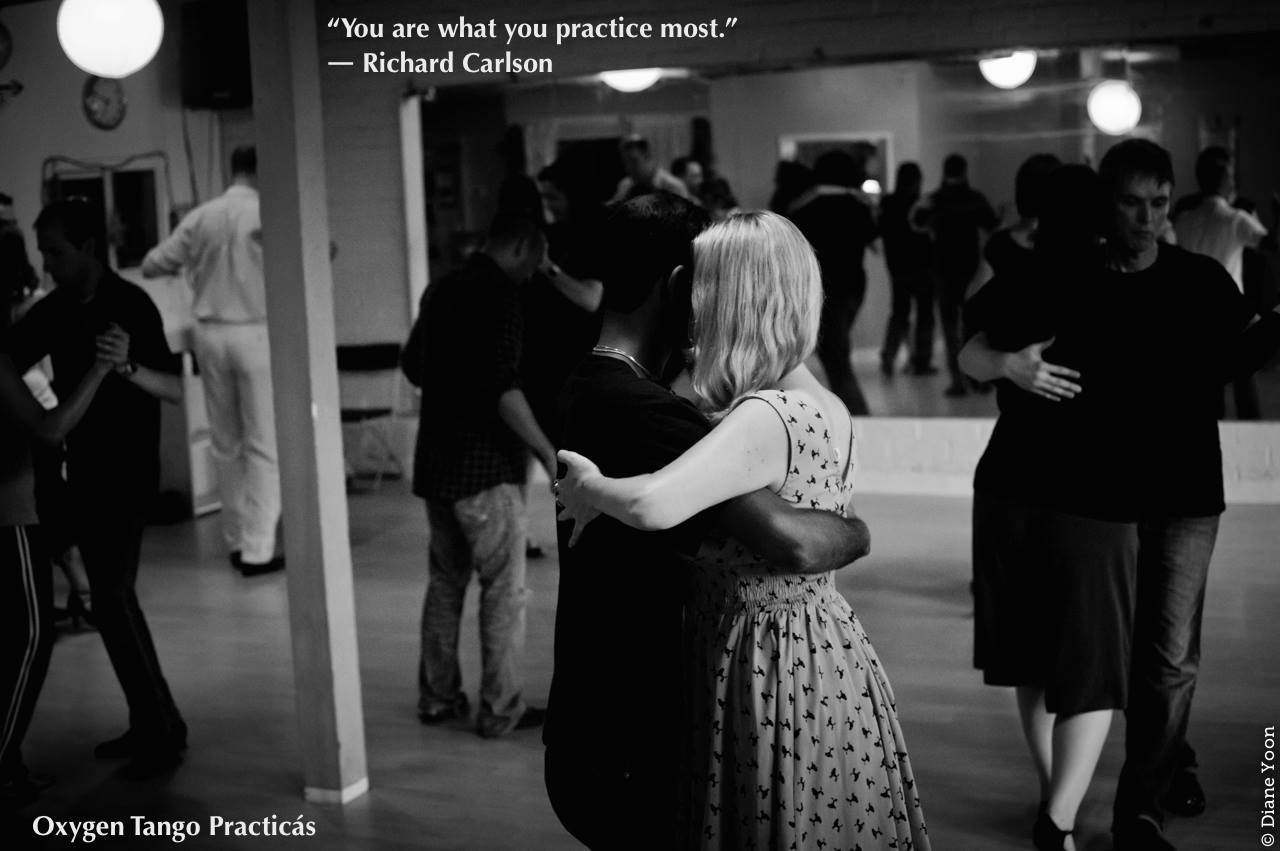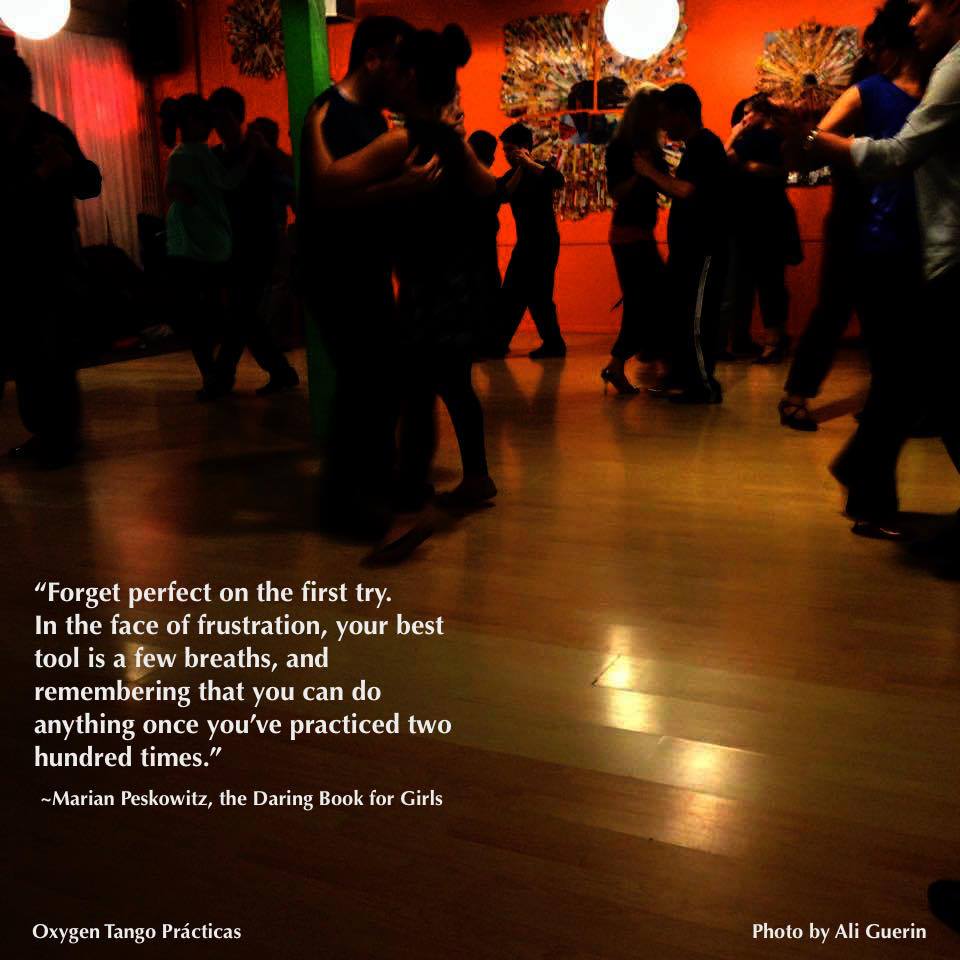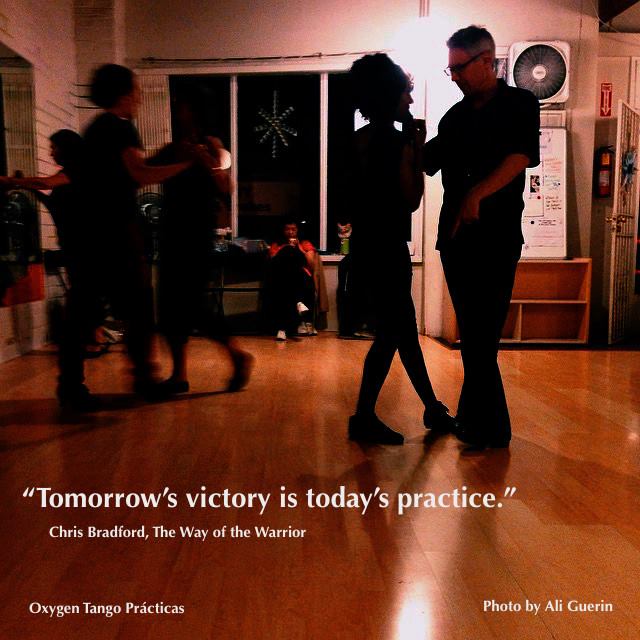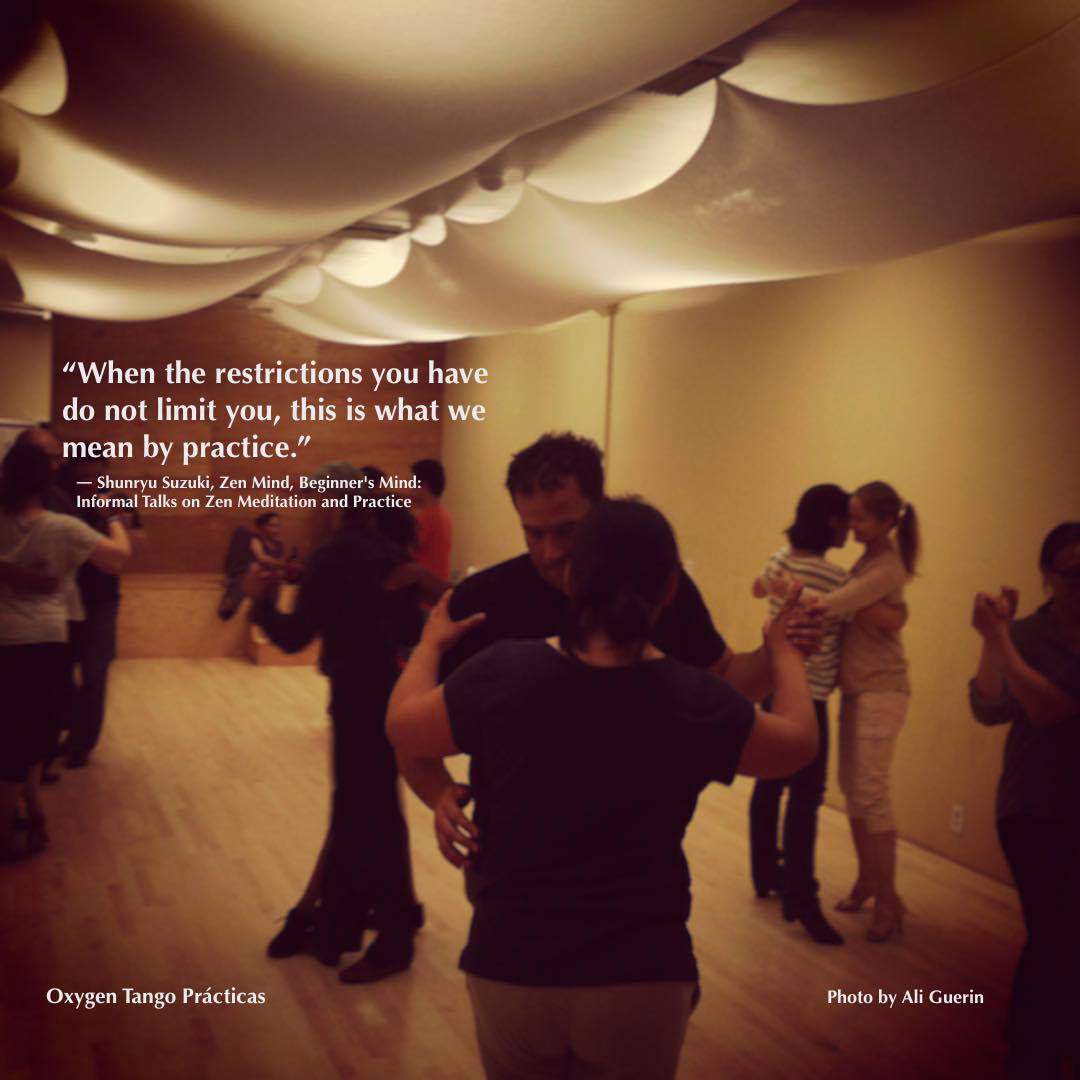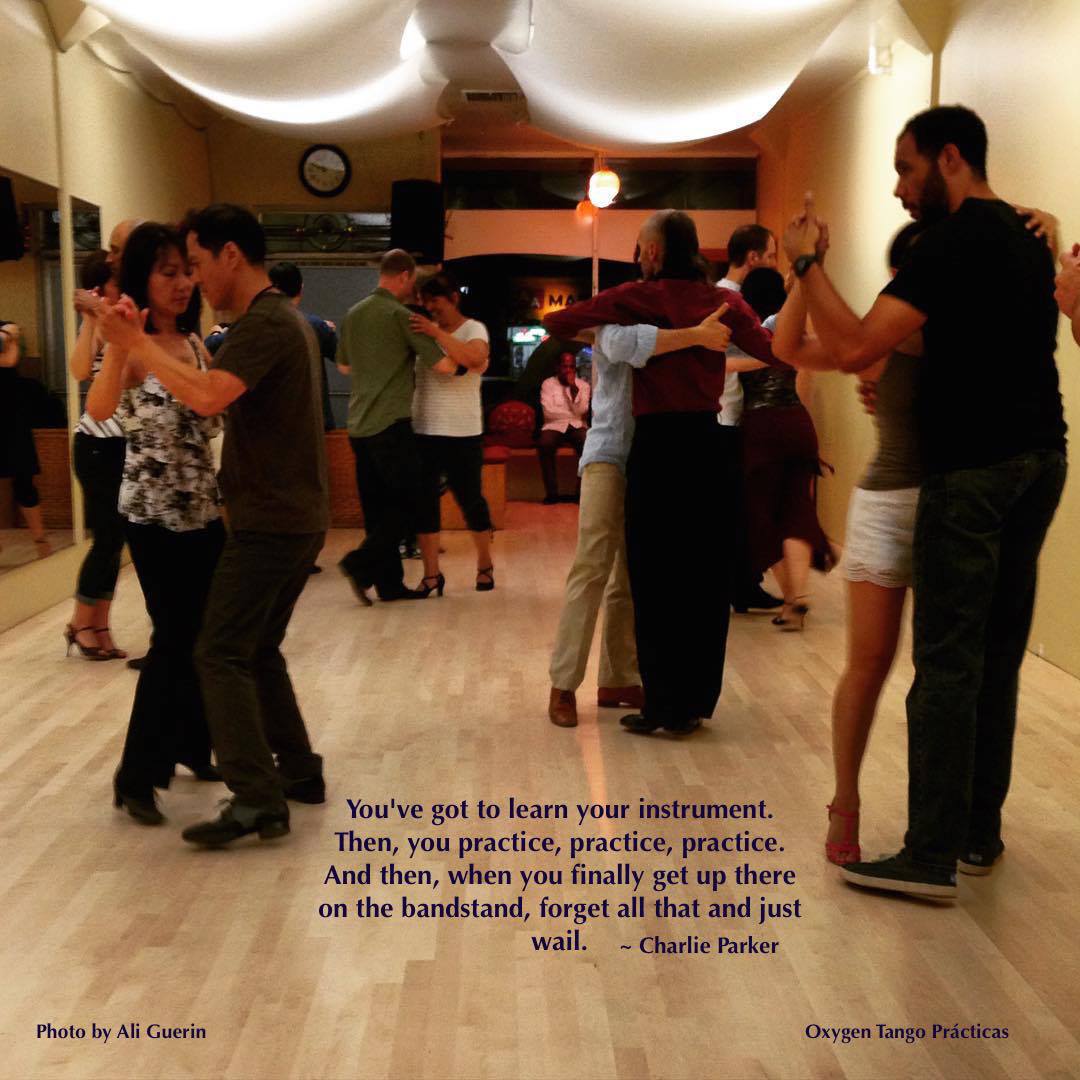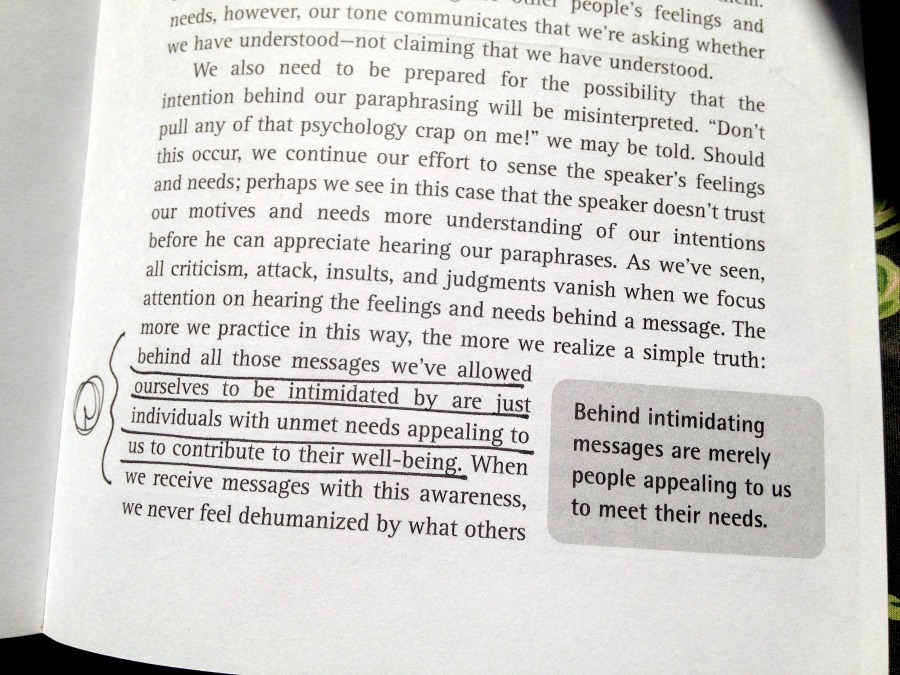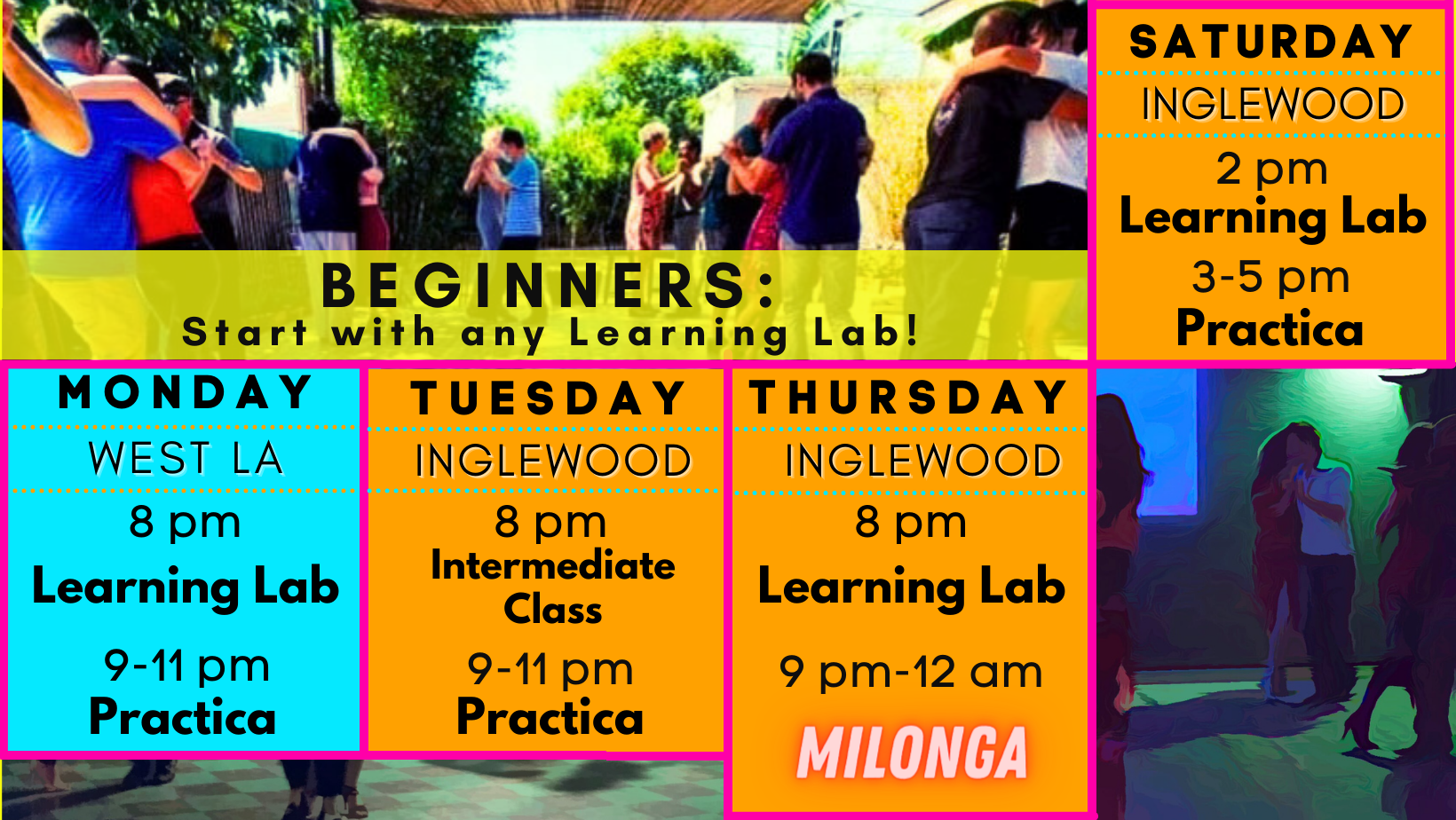Dear women of Tango. Let your joyful, unbridled, innocent, sensual self find the dances it wants.
/PHOTO BY GLENN CAMPBELL PHOTOGRAPHY
I know a woman who knows her power. She knows the power of her body, her mind, her soul. She is creative, successful, at peace in a life she chose and she loves. But what happens when she steps into a Tango event? She becomes passive, somnambulistic, slightly demented, her fury barely veiled, the very picture of a victim.
She’s furious - and she’s furious with nothing and nobody but herself. I know her because I have been her. I have been her but I also see her, everywhere. And I know why she’s furious.
She has all the power and the passion, the tenderness and the ruthlessness and the sweetness of the Tango seething inside her. She is wearing a beautiful dress, she is fragrant, her shoes shine. She knows she is gorgeous and her whole being wants to dance. She feels the dance dancing her from within and she is ready.
And then she does it: she quietly sits and goes about slowly suffocating the dance inside of her until it completely dies and all that is left is a disgusted, wasted, expensive dress.
Here is how she does it: she tells herself things:
“There he is! I think he sees me.”
“I’ll wait until he finds me.”
“I don’t want to dance with him unless he wants to dance with me.”
“I’ll just sit here. He can come invite me.”
“Of course he knows I want to dance with him. And I am sitting right here.”
“See, I don’t want anyone to feel pressured.”
“There are too many women here tonight.”
“Those women are so pushy. He’s dancing with her because he feels obligated.”
“I would never ask someone good to dance. I don’t want to pressure them.”
“The good leaders only dance with young, sexy women who are right there in front of him.”
“If I walk over there, will he think I want to dance with him?”
“If I say hi, will he feel worried that I am asking him to dance?”
“He can just cabeceo me anytime. I’m available, isn’t it obvious?”
“I’ll dance to whatever music. Just as long as it’s with one of the good dancers.”
“Okay, fine, I’ll dance with anyone who asks me.”
“Seems like an off night. I’m going home. Maybe next week.”
“Tango sucks. I hate Tango.”
Dear powerful lady. Tango doesn’t suck and men don’t suck either and there is nothing wrong with those women who go out and take initiative to create the dances their souls thrive on. The only thing that has happened here is that you have hypnotized yourself into a thoroughly senile state from which it will be impossible for you to kindle the mood of a Tango.
The dance begins before the embrace
You can’t expect the Tango to come to you while you do nothing. You might have glimpses of weak bliss here and there but it is an awful way to live and you’ll probably be mostly bitter. Why do that? You have to go out and prowl, find it, encourage it, romance it, create it, kindle its fires, fan its flames, water the seeds of equality and love.
Here’s what’s true. Tango is a dance of equals. A dance where both partners express the fullness of their power. A dance where masculine power holds, contains, sculpts and reveals the joyful, unbridled, innocent sensuality of feminine power.
Here’s what’s true. Tango is a very specific dance. A tanda is an encounter: This man, This woman, This music, This moment. A never-to-be-repeated anomaly, a totally transient work of art, a tesseract. This dress and this suit will probably never touch each other again. When you are sitting around waiting for something to happen to you, you are not participating in the creative process of sorting out which specificities need to happen specifically now. And that process IS the milonga. Everyone else is in on it. Nobody can know how the Tango is talking to you unless you show them through how you dance the milonga.
The dance begins before the embrace, it begins in the minds, it’s played out in an invitation process where both partners show vulnerability and courage and risk rejection for the sake of passion and beauty. If only one risks rejection, it's not equal, it's not exciting. So we dance before we embrace - we dance out the invitation.
Dancing the invitation is beautiful and fun. It means you take the decision to be and feel beautiful and project beautiful energy across and throughout the whole milonga. To be present and attentive in every moment. It means you let your whole being and presence at the milonga be and share who you are and what your dancing is: joyful, unbridled, innocent, sensual. It means you move when you feel like it, and move towards things that attract and interest you - honestly! It is a very advanced form of following. Advanced, because, it can be hard to do in a setting where everyone’s minds are crisscrossed by many little fears. Living and being this way attracts dances that match you. Sometimes the ones you attract will surprise you!
Dismantling the fearful thoughts that interfere with your feeling free
1. I am afraid he will feel pressured.
Here’s what’s true. You have an out-of-all-proportion fear of pressuring a good dancer man. You are terrified that your tiny hello and attention will elicit some kind of bizarre revenge in which he avoids you forever, never dances with you again, and tells all his friends that you are aggressive.
The good dancer man is not like that.
- The good dancer man is excited, nay, inspired, when he knows a beautiful woman wants to dance with him!
- In fact, a lot of times the good dancer man doesn’t know what he wants. And sometimes what he wants will be shaped whether he can feel that you want to dance with HIM, NOW, to THIS music.
- Finally, the good dancer man can be trusted to say no if he doesn’t want to dance. Isn’t that good to know?
If you can regally and openly accept it when the good dancer man cannot dance with you in the moment you wished - because that will be the truth sometimes - you are safe.
2. I am afraid other people will notice that I want to dance with him and judge me.
It can be a little bit terrifying when you realize that to live honestly you will probably have to show your cards. To notice that you can only get close to a dance by occasionally moving your whole body toward someone hot and that other people will see that. They will see your move, your desire - and possibly your changing your mind or your negotiation not going the way you wanted.
Let us realize that we free the other women around us when we are practicing being ourselves - being true and honest to our flow, our inspirations, our needs, and being brave and honest in moving ourselves in the directions where our intuition is telling us to go.
(By the way, cabeceo is definitely awesome and a strong way to go, and it also works beautifully well in concert with walking around and hugging and saying hello to people we feel drawn to and want to connect and share energy with. It's a different but related topic. I like to create most my dances by cabeceo.)
3. I am afraid of not dancing.
Some of us have a slightly mad and highly American goal-orientatedness at milongas that does not really fit with real Tango culture. You think you’re doing “good” if you’re dancing a lot and you want to just get those miles in. You start to feel sour if you’re not dancing 70, 80, 90% of the time. This puts you in a mood where you’ll dance with “anybody” above a certain level and as the event wears on you lower your standards lower and lower.
But the fact is, Tango is not about “just dancing as much as you can” but it is about specificity and quality. The encounter. How many different kinds of success are you open to?
- You might have one epic tanda that feeds your soul for a whole evening and after that all you want to do is giggle and chitchat.
- You can have an epic Tango with anyone if you’re open to it - a beginner, another woman, an elite-professional-star - if you’re in the right headspace and if you’re tuning to the music and feeling it inside.
- And, you can also have an epic Tango with someone without dancing - a full true sincere connected deeply mutually attentive tanda of conversation in which you find the oneness that refreshes our whole psyche. (Are you open to that too? If you are, then don’t avoid talking to people. ;)
4. I am afraid of saying no.
Sometimes that tanda of “just” conversation will be way better than just any dance with anyone who managed to pluck up the courage to invite you even though you were just sitting there looking confused or glassy.
The more we are geared toward wanting to dance 100% of the time and the more our own thinking brings us to our knees to the point where we will accept a dance with just anyone, the more screwed up our Tango world becomes. Because we are then unable to do the one thing that keeps us and all women safe: to say no.
Women, please, learn to say no. Say no if you’re not feeling it. Say no to anyone! Yes, you can say no to a teacher, a star, a “good dancer” or a “bad dancer.” Stay true to yourself, and now go out and create the tandas that are true to what the dance inside you is telling you.
You’re maybe afraid you’ll say no and the guy will seek revenge, he will never dance with you again, and neither will other guys. But actually the more we women say authentically no, the more we help everyone. Good men will get curious and get more serious in their quest to uplift their Tango and their skills. Some guys I said no to early on actually thank me now for motivating them to become more kick ass dancers! If you keep coming out, and keep getting good, keep making friends, keep caring about Tango and contributing joyfully to the scene, you have nothing to fear.
5. I am afraid I am not good enough.
You are a gift and a joy and whatever your Tango skills are right now there is probably a delightful moment awaiting you at the milonga if you believe in yourself and know yourself to be the beautiful being that you are.
How “good” you are - or how “good” others perceive you to be - is to some degree contextual and depends a little bit on how present you are, how present others perceive you to be. And that is one thing you do have control over in THIS moment. You can let yourself be deeply immersed in the music you are hearing - instead of ignoring it and worrying about dances. You can let yourself be deeply involved in the people who are here - instead of checking your phone all the time. ;)
Remember, if someone doesn’t want to dance with you they can always decline. You don’t have to decline on their behalf and steal from them an opportunity they might have loved. And seeing a “no” as a valuable form of feedback that inspires you to improve your social or dancing skills is a powerful choice that will only uplift you.
Your happiness at milongas will definitely become more consistent the more skillful you become in Tango. The more you practice, the more you inquire, the more you seek the profound essence of Tango and find and create its meaning for yourself. So really that commitment, to keep growing, to be with it for the long haul, is really the most effective long term way to anchor your Tango happiness.
Being true, sincere, and present to what you truly want
Finally and in summary, ladies, please become alert to the tiny ways you can betray yourself by pretending you don’t actually want what you do actually want. Being in this state is extremely stressful because you are totally split and will not be able to act in a coherent way.
What I discovered is that for me, when I DO want something, it is very very clear. It keeps coming into my mind, more and more often, with more and more urgency, elaboration, specificity. This is very different from being in a state where I don’t want anything in particular or I am not sure whether or not I want something.
- Your soul don’t necessarily want to dance with someone just because he is famous on Facebook.
- Your soul doesn’t necessarily want to dance with someone just because you’ve danced with them seventeen times before and each time was epic.
- Your soul doesn’t want to dance with someone just because it hasn’t danced for the past forty minutes.
Your intuitive soul is very specific and surprising and inspired by all kinds of weird things. So don’t get stuck in patterned habits. Instead, listen to the small voice of inspiration and get used to how it tells you what you want and be open for something totally unexpected! I wish you luck, love, fun, and enthusiasm on the path. Love, Mitra






